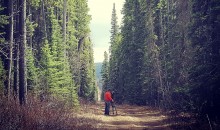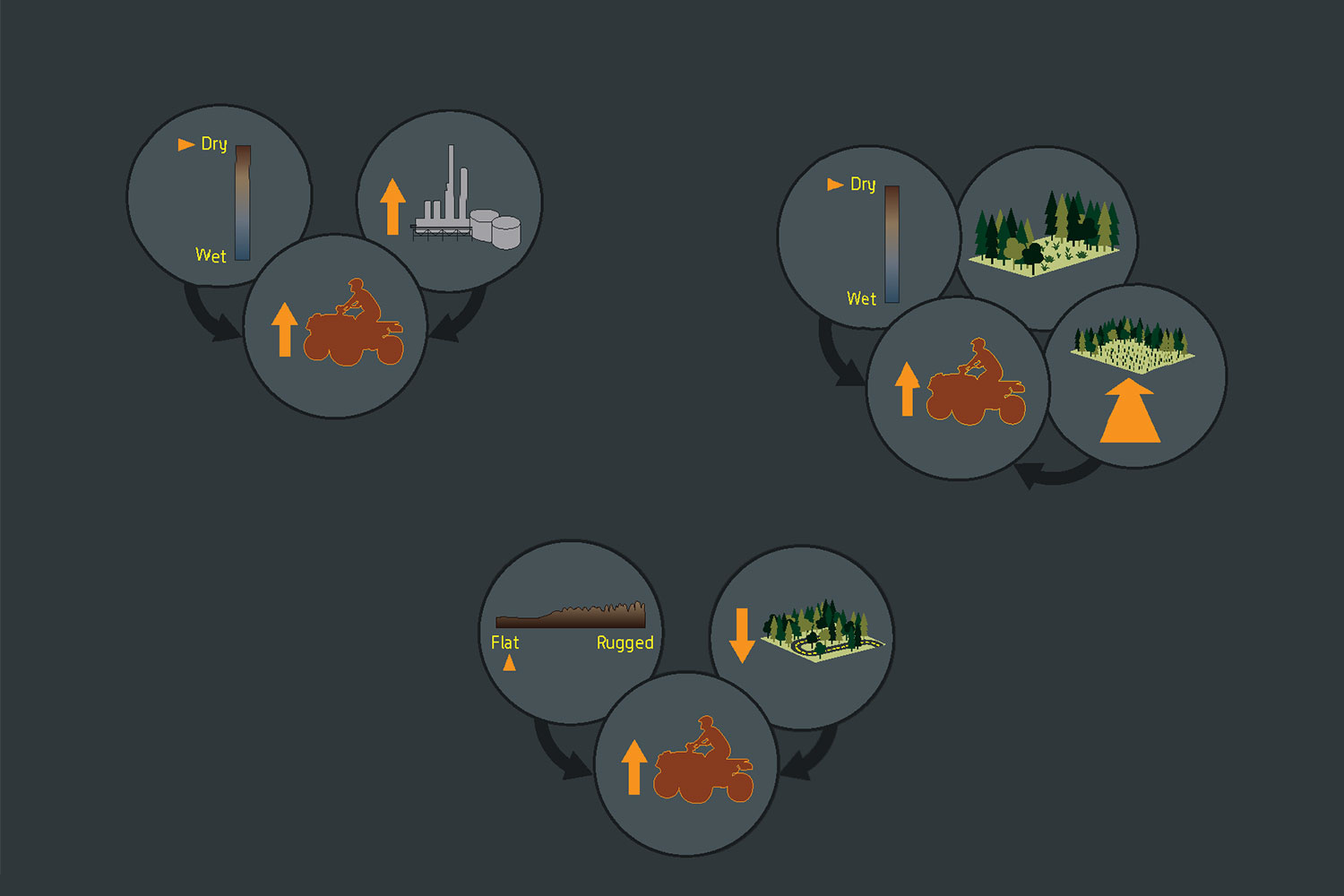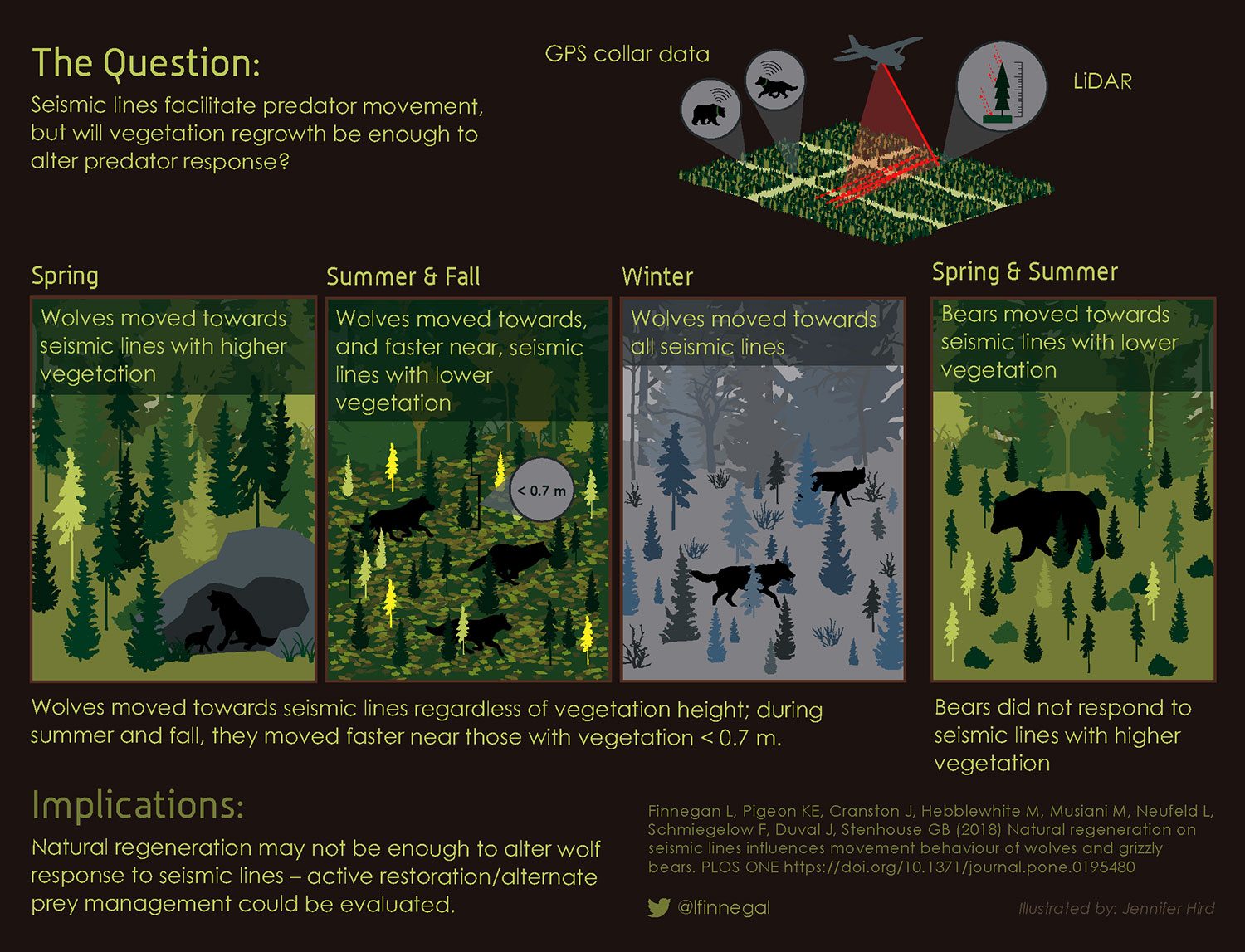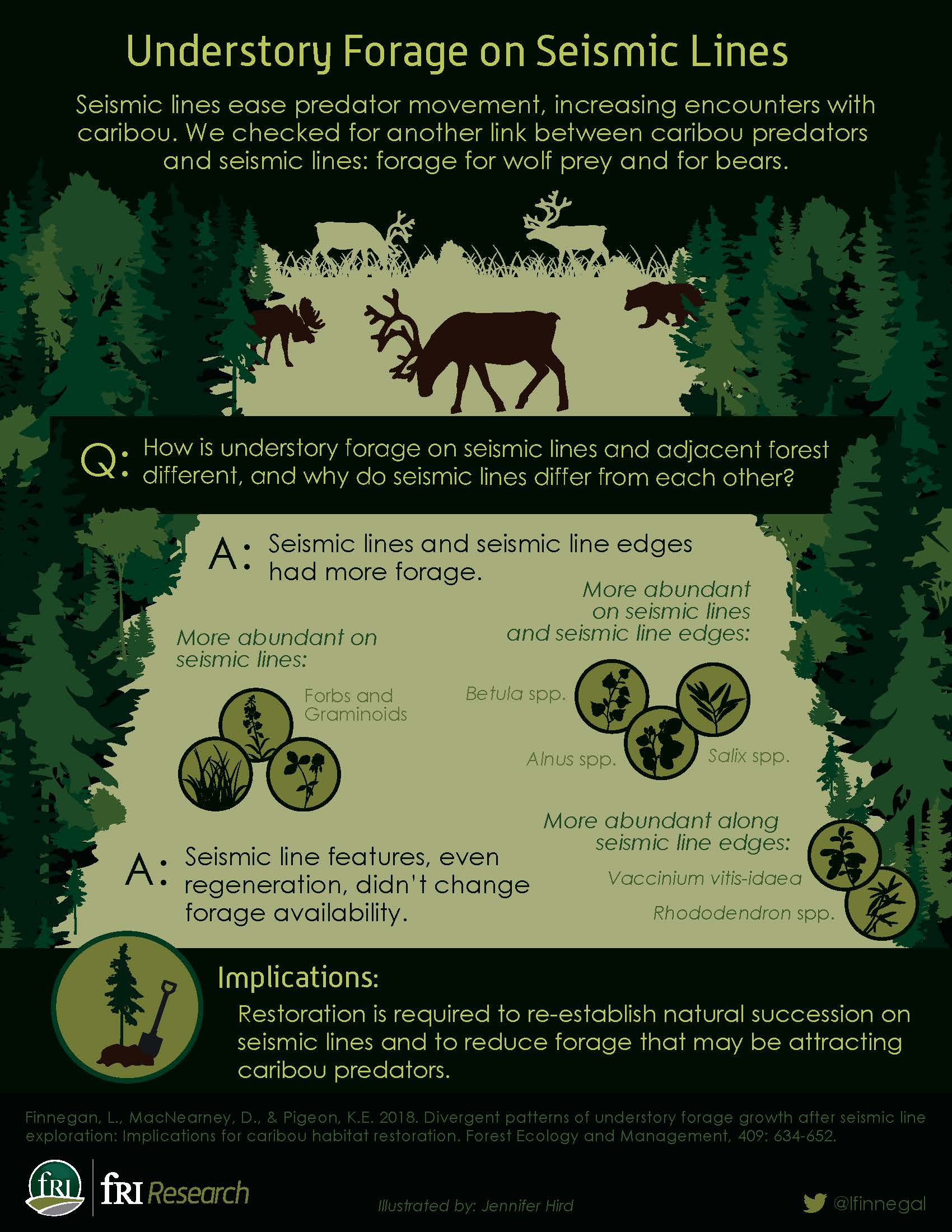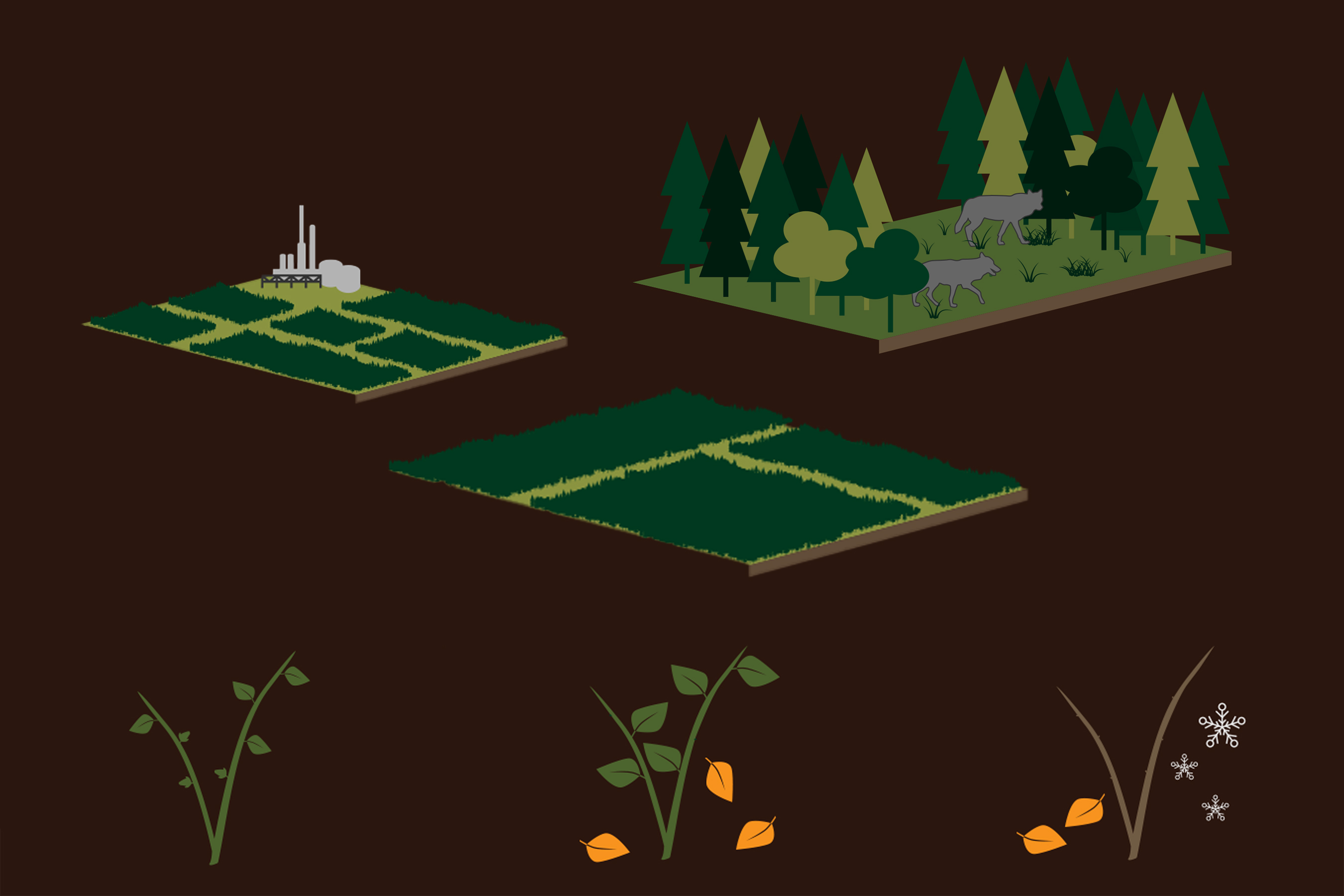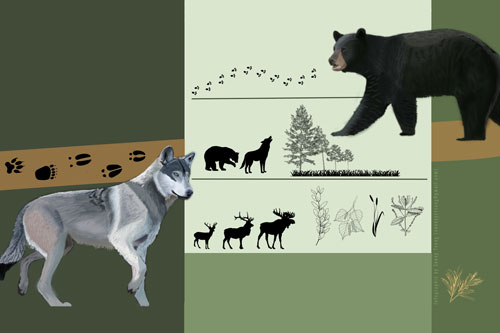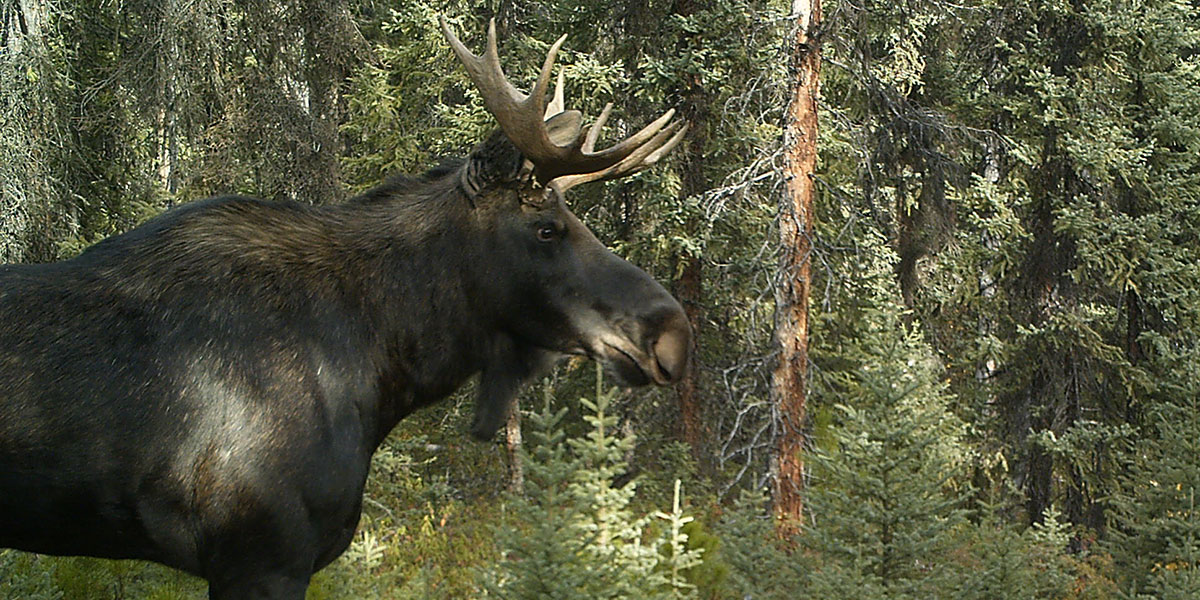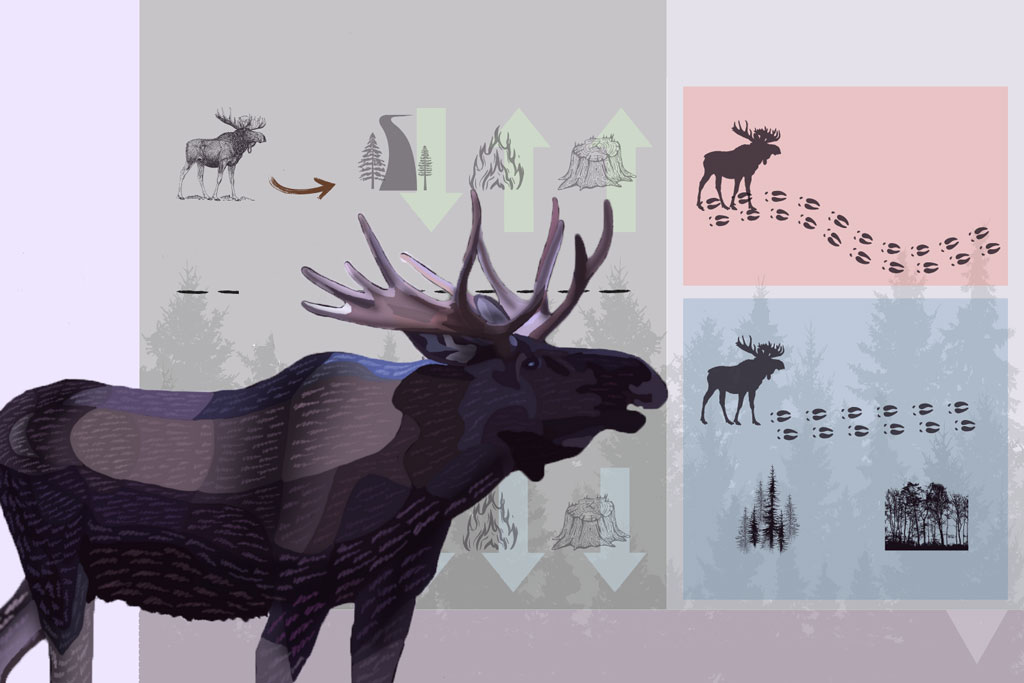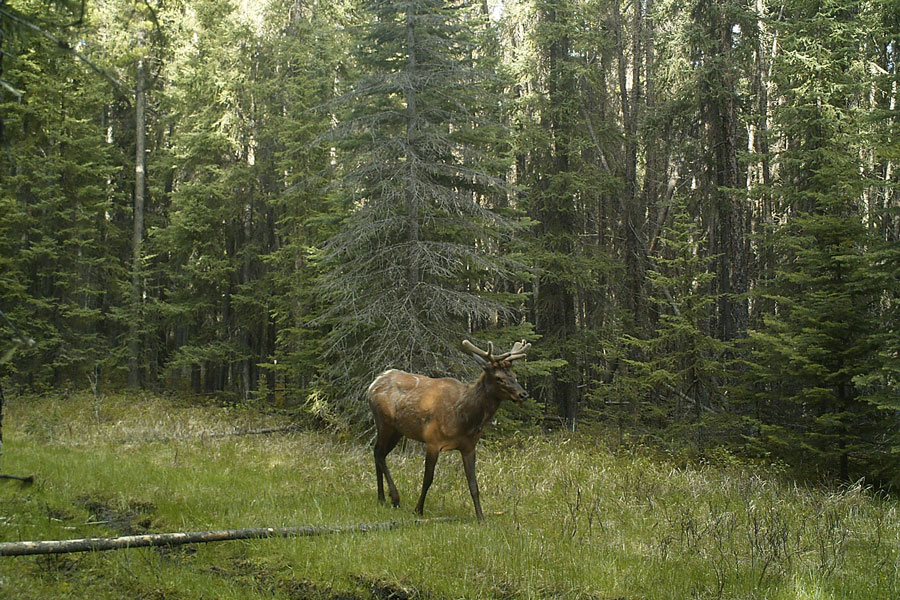
Abstract
- Habitat restoration is a necessary component of wildlife conservation in anthropogenic landscapes. To ensure restoration initiatives achieve the desired effects on wildlife communities, it is useful to investigate how animals use landscape features. Understanding the relationships between wildlife use and ecological cues provides specific and measurable targets that can be used to measure restoration success.
- In western Canada, linear feature networks formed by seismic lines, pipelines and roads have altered the boreal forest landscape and resulted in population declines for woodland caribou. Restoration is aimed at supporting caribou recovery by deterring linear feature use by caribou predators and ungulate competitors. Information on how linear feature characteristics facilitate or deter wildlife use supports restoration initiatives by providing specific targets for restoration.
- Here, we used wildlife track and sign data to investigate biophysical characteristics related to the use of linear features by canines, bears, deer, elk and moose in caribou ranges of west-central and north-western Alberta and British Columbia. We built generalized linear mixed models consistent with three hypotheses that could explain likely mechanisms for use: (1) ease of movement, (2) risk avoidance and (3) resource availability (prey and forage).
- Moose, deer, elk and bears were more likely to use linear features with either human or game trails. Bears and canines were less likely to use seismic lines with greater lateral vegetation cover and taller vegetation, respectively. Moose, deer and elk were more likely to use linear features with a greater cover of ungulate forage taxa such as willow, birch, sedges and forbs.
- These results suggest that restoration focusing on trails, online vegetation structure and online vegetation type should deter predators and ungulate prey species to the overall benefit of caribou. Our study corroborates the findings of other research recommending structural and functional restoration using high-intensity line blocking and vegetative regeneration. We provide specific targets for linear feature restoration to assist in prioritization according to restoration objectives, which translates to a broader goal of linking local-level restoration actions to landscape-level conservation goals. This approach to restoration has implications for any major system experiencing anthropogenic landscape change.
Read the full paper here.
Get the infographic summary here.
Citation
Tattersall, E., Pigeon, K., MacNearney, D., & Finnegan, L. (2023). Walking the line: Investigating biophysical characteristics related to wildlife use of linear features. Ecological Solutions and Evidence, 4, e12219. doi:10.1002/2688-8319.12219







